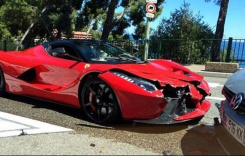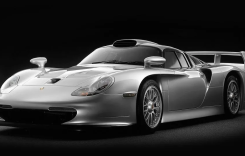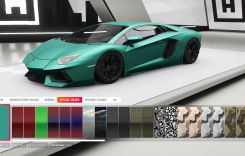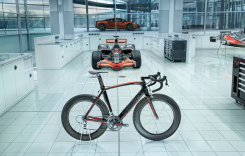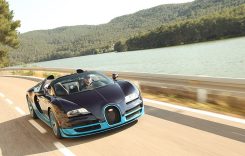
Triumph’s iconic Street Triple 675 R ABS ($9999) has been a worldwide motorcycling favorite for years. With the sporty performance of its 675cc Triple and its racy, yet still comfortable-on-the-street chassis, this English bike has developed a strong following and for good reason.
We’re fans of the British brand’s signature styling highlighted by twin bug-eyed head lamps, but in its latest form the Street Triple taken a few steps back. The three pieces of bodywork, including the chin fairing, fly screen and red-accented side uppers, evoke a cluttered and cartoonish appearance – especially when parked next to the handsome Brutale and the more modern-looking Yamaha.
Behind the handlebar its questionable appearance fades from memory—replaced by admiration of its refined and well-crafted riding experience. We also preferred the classic yet functional look of its mixed digital/analog instrumentation that was much easier to decipher while riding.
Similar to the Brutale, the Street Triple is compact, feeling lighter and smaller than the Yamaha. Although wheelbase is a full inch longer than the MV it doesn’t feel abnormally stretched and is still over an inch less than the novice-friendly Yamaha. On the scale it weighs one pound more than its European-built foe and four less than the FZ. However, it’s worth noting that the Triumph carries more fuel than both.
Despite having the tallest seat of the trio (32.3 in.) the British machine doesn’t feel noticeably taller and our 5’5” lady tester was able to plant both feet on pavement at stops. We are especially fond of its slimness and the relaxed but still sporty position of the controls, which give an ideal platform to work from on the road. However, taller riders feel a more cramped compared to the more versatile proportions of the FZ.

Street Triple 675R Suspension Settings
Fork
Preload: 7.5 (Turns in)
Compression: 7 (Turns out)
Rebound: 7
Shock
Preload: Six threads showing)
Compression: 7
Rebound: 7
“The Triumph fell right in the middle of the comfort scale with it not being as inviting as the Yamaha but more forgiving than the Brutale,” thinks Dunstan, who represents taller riders standing at 6’1”. “Handlebar height, seat-to-peg, and seat plushness felt neutral. The fact that it didn’t evoke any comment either way is a good thing.”
Twist the throttle and it’s apparent that the Triumph’s smaller displacement 675cc engine doesn’t have the thrust of the larger bikes. What it does have is excellent and accurately metered throttle response, even though it doesn’t’ offer adjustable engine settings like the MV or Yamaha.
Reviewing the dyno graphs show that its engine produces over 13 lb-ft less torque than the class-leading Yamaha and 11.31 lb-ft fewer than the MV. In measured horsepower the gap between the three is larger, with the Triumph pumping out almost 20 ponies shy of the Italian steed and nearly eight fewer than the Japanese bike.
Although down on power compared to the larger displacement bikes the Triumph’s powerband is smooth and its throttle response offers near perfect calibration even without the use of different engine and throttle maps as employed on the MV and Yamaha.
The Triumph’s smaller mill did pay a slight advantage at the gas pump with it recording the highest average fuel mileage figure of almost 38 mpg. Pair that with its class-leading 4.6-gallon fuel capacity and we were able to cover the most amount of ground between fill-ups with its 174-mile range.
While it’s missing the snappiness of the big bikes, the Triumph still posted pleasing acceleration numbers through the quarter-mile with a time of 11.73 seconds at 120.3 mph. This positioned it behind the Yamaha but ahead of the MV. Part of the reason why it was able to best the more powerful MV is its superior clutch action combined with a longer wheelbase. This allowed us to launch the 675 much harder without having to work as hard at keeping the front wheel on the ground. Its six-speed gearbox also performed without flaw, although it wasn’t quite as precise-feeling as the Yamaha’s.
“The power delivery was mellow,” says Paris. “I feel like if you were a beginner this bike would be less-intimidating to ride, yet it still has enough muscle for more experienced people.”
The smaller motor still plays the part in the engine character department. True, it’s not as wild as the raw and highly visceral MV, or as professional-sounding as the polished Yamaha, but the Triumph’s high-pitched whine and deep intake roar is music to our ears year after year. It’s like that favorite song that you play over and over—a tune that never gets old.

(Above) Despite being a little old in terms of design the Triumph’s engine is playful and a joy to ride. (Below) There isn’t much the Street Triple does wrong. We loved the way it hugs the road through turns yet is comfortable during highway commutes.
“The fun motor made the Triumph an enjoyable ride,” confirms Dunstan. “Compared to the other two the lack of displacement was noticeable but that was offset by the overall package.”
As Dunstan astutely mentions, the Triumph’s complete dynamics are what makes it an exceptional machine. Compared to the other two the Triumph’s chassis is in a different league. Whether cruising on pothole-laden city streets or carving turns on the track the Triumph performs impeccably.
“I like riding the Triumph—especially in the canyons,” explains Paris. “It handled the best out of all the bikes. It felt like I was riding a sportbike without any bodywork. It did everything really well. If you’re going to tell me to pick one to ride to ride at the racetrack the Triumph would be it.”
“The Street Triple shares some of the same DNA with its full on supersport brother the Triumph Daytona,” notes Dunstan. “Both in the twisties and on the racetrack, the Street Triple felt the most capable of the bunch just getting through the business without ever putting a wheel wrong.”
Well set-up suspension along with adept braking hardware allows the Brit bike to halt from 60 mph in the shortest distance (121 feet)—though ABS had to be manually disabled to do it. With it enabled, stopping distance increased by seven feet. This shows that the
Triumph Street Triple 675 Highs & Lows
Highs
- Highly refined riding experience
- Racetrack-grade handling and braking
- Fun and peppy engine
Lows
- Quirky styling and appearance
- ABS calibration lengthens stopping distance
calibration of the system could benefit improvements as it is a little too intrusive to be deemed effective in outright performance. Still it’s a nice feature to have and we love that it can be manually overridden via the dash’s menu system.
Although it looks quirky, the Street Triple feels anything but when seated behind the controls. In spite of its smaller engine the Triumph still gets with the program, it just takes a little longer to get there. Factor in its well-sorted handling and braking, as well as the smooth, metered-response of the engine and it’s readily apparent that the Triumph is the bike you’re going to want to ride every day.

